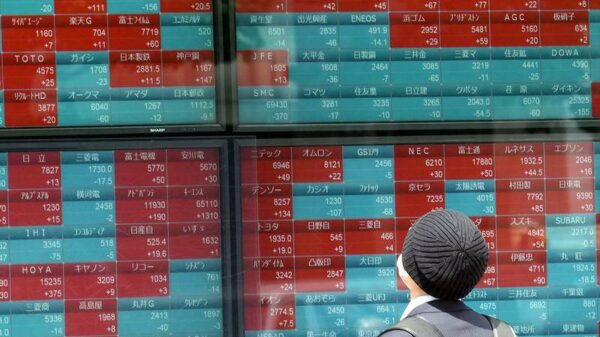Global stock markets experienced a notable increase as expectations for a potential interest rate cut by the Federal Reserve gained momentum. This development prompted investors to shift their focus towards technology stocks, dismissing concerns about a potential overheating in the sector.
Market Reactions to Fed Signals
The MSCI All-World Index rose for the third consecutive day, recovering from two-month lows reached last week. European shares climbed by 0.2 percent, while US stock index futures approached positive territory. The yield on benchmark 10-year Treasury notes remained stable at 4.036 percent, with the two-year yield holding at 3.49 percent in Europe, reflecting the market’s anticipation of a lower Fed fund rate.
Comments from Federal Reserve officials contributed significantly to the shift in sentiment. Christopher Waller, a Fed Governor, indicated that data suggested the US job market remains weak enough to warrant another quarter-point rate cut. His remarks followed those of John Williams, President of the New York Fed, who hinted late last week that a cut in December is a possibility. Currently, markets are pricing in an 81 percent chance of a rate cut in December, a significant increase from 42.4 percent just a week ago. The Federal Reserve is scheduled to meet on December 9 and 10.
Later today, investors will review delayed data on retail sales, wholesale inflation, home prices, and consumer confidence. While these figures may not drastically alter expectations regarding the Fed’s next move, they will provide additional context for market participants.
Currency and Commodities Update
Despite the boost in stock prices, the dollar’s performance has been mixed. In November, the dollar has strengthened against most major currencies, with the exception of the offshore Chinese yuan, which has appreciated by approximately 0.5 percent. According to Michael Brown, a senior research strategist at Pepperstone, the foreign exchange market is currently focused on growth differentials, with the US economy outperforming its peers. This trend is expected to continue into 2026, which bodes well for the dollar’s future.
Notably, the dollar has appreciated against the Japanese yen, which is currently trading at its weakest level in 10 months. This situation is causing concern among Japanese officials regarding the potential need for intervention to stabilize the yen. Recently, the dollar was recorded at 156.47, showing a 1.6 percent gain in November. The euro gained 0.1 percent to reach $1.1531.
Tensions surrounding Japanese markets have also been fueled by diplomatic issues, particularly a comment made by Sanae Takaichi, Japan’s Prime Minister. She suggested that a Chinese attack on Taiwan could provoke a military response from Japan. Following this, Takaichi spoke with Donald Trump on Tuesday, after his conversation with Chinese President Xi Jinping on Monday. Trump’s upcoming travel to Beijing in April has been interpreted as a sign that diplomatic relations between the US and China are improving following a truce in their trade war.
Looking ahead, US stock and bond markets will be closed on Thursday, November 23, for the Thanksgiving holiday, with trading for half a day on Friday.
In the tech sector, shares of Alphabet Inc. rose by 2.5 percent in Frankfurt, indicating a likely rally in US premarket trading. This uptick is attributed to a report from The Information that revealed Meta Platforms is in discussions with Alphabet to utilize its AI chips in data centers starting in 2027, with plans to rent chips next year.
In commodities, Brent crude futures fell by 0.8 percent to $62.88 per barrel amid concerns that global supply could exceed demand significantly in the coming year. Gold prices also decreased by 0.6 percent to $4,115 per ounce but remain on track for a nearly 3 percent gain in November.
This dynamic market landscape reflects shifting economic indicators and investor sentiment as the global economy navigates through fluctuating growth forecasts.































































